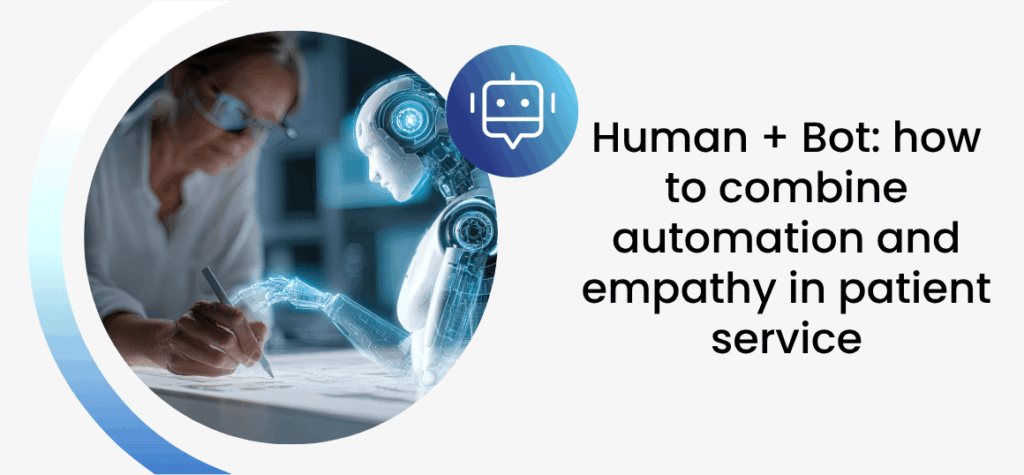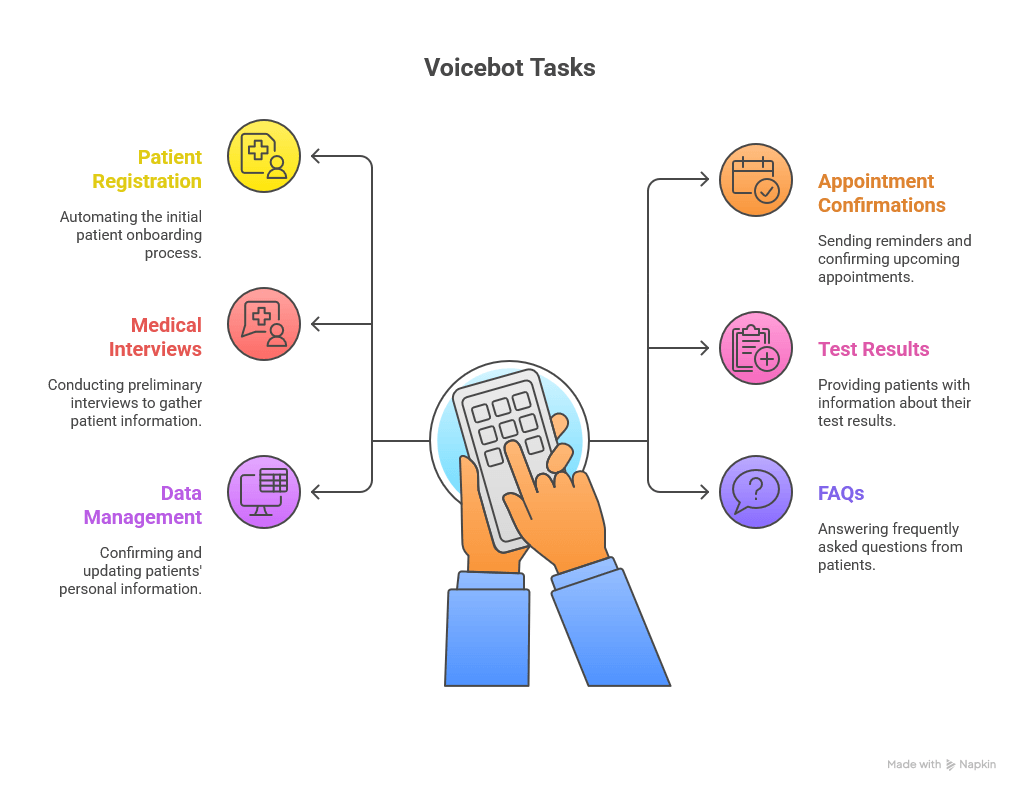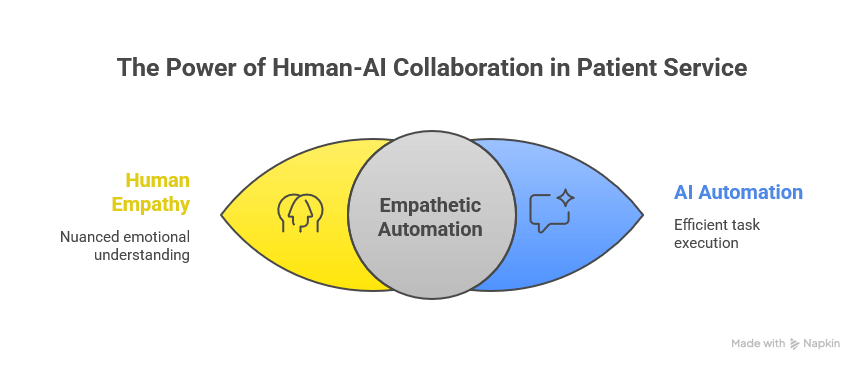Human + Bot: how to combine automation and empathy in patient service

Human + Bot: how to combine automation and empathy in patient service
Combining automation and empathy in patient service is not easy. It requires sensitivity, an understanding of the specifics of patient interactions, and the use of high-quality automation tools. Let’s take a closer look at the idea of combining Human + Bot. How can it be done effectively and tastefully? And why is empathy so important in the medical sector?
Voicebots and AI tools take over routine tasks
As a rule, automation tools take on repetitive and routine tasks. In the context of a medical facility, this primarily includes:
- patient registration,
- appointment confirmations,
- conducting medical interviews,
- providing information about test results,
- confirming and changing personal data,
- responding to FAQs.

However, it may turn out that even in these cases, human intervention is required, or the patient simply prefers to speak with a person. The medical facility’s task is to respond to this need and offer different forms of contact, including telephone registration or an in-person service point. The essence of this approach lies in maintaining a healthy and satisfying relationship between the patient and the facility. Before deciding to invest in a voicebot, it is worth checking how to effectively implement this type of medical registration system in a way that benefits all parties involved.
Humans step in where emotional support is needed
A medical consultant should take over contact when the patient is anxious, overwhelmed by emotions, going through emotional difficulties, or when the medical issue is more complex. This requires sensitivity, but many automation tools can detect the patient’s intent and emotional state and bring in a specialist in real time. This ensures full understanding of the patient’s needs and demonstrates high empathy. In many cases, this is the key to calming the person on the other end of the line. In recent months, organizations have been consciously adopting the idea of Human in the Loop, which aims to combine human intuition and experience with the computational power of AI algorithms. This is the direction in which medical voicebots and other technologies based on artificial intelligence and large data sets should evolve.
Combining Human + Bot – does it produce better results?
Combining the potential of humans and artificial intelligence produces better results in patient service than relying on either element alone. This is connected to the dynamic evolution of human needs and the growing public acceptance of modern technologies. In Poland, the medical sector is already using them on a large scale, as confirmed by the European Commission’s report Digital Decade 2024: eHealth Index Survey. According to this study, Poland ranks fifth in the EU in terms of the digitalization of the medical sector.
The bot takes over many basic tasks. At the same time, the medical consultant has access during the conversation to a wide range of data collected by AI tools and stored in databases, as well as to analytical models. This allows the consultant to fully focus on the patient without wasting time searching for information in the system or paper documentation. Improved service quality and better access to doctors translate into improved public health and higher patient satisfaction. For private medical facilities, this can be a decisive factor in building a stable market position.
Porozmawiaj z naszym specjalistą
Human + Bot – what should you watch out for?
When combining human work and automation using voice or chat bots in patient service, it is important to be especially careful and to fully understand the meaning of empathy. It is not only about words but also small gestures, brief pauses, or a tremor in the voice. AI tools may have difficulty correctly detecting and interpreting these nuances, which is why humans should supervise them and step in whenever necessary.

It is also extremely important that the patient knows from the very beginning whether they are speaking with a bot or a human. This kind of transparency affects their comfort during the conversation and their overall experience. Another challenge for any organization implementing a medical voicebot is properly training the staff on how to use it. Regular training sessions and systematic monitoring of employee and patient satisfaction are key to maintaining the highest standards of service quality.
Check out our overview of AI tools supporting medtech.
Digital transformation of the medical sector with EasyCall
Do you want to skillfully combine automation and empathy in patient service? For years, we have been helping medical facilities with digital transformation. We have experience in integrating the potential of voicebots and consultants within hybrid patient service models. We work with organizations of various sizes and scopes — from small clinics and hospitals to large medical centers. Contact us and find out how we can help you improve service quality and facility profitability.
Our clients already include, among others:
